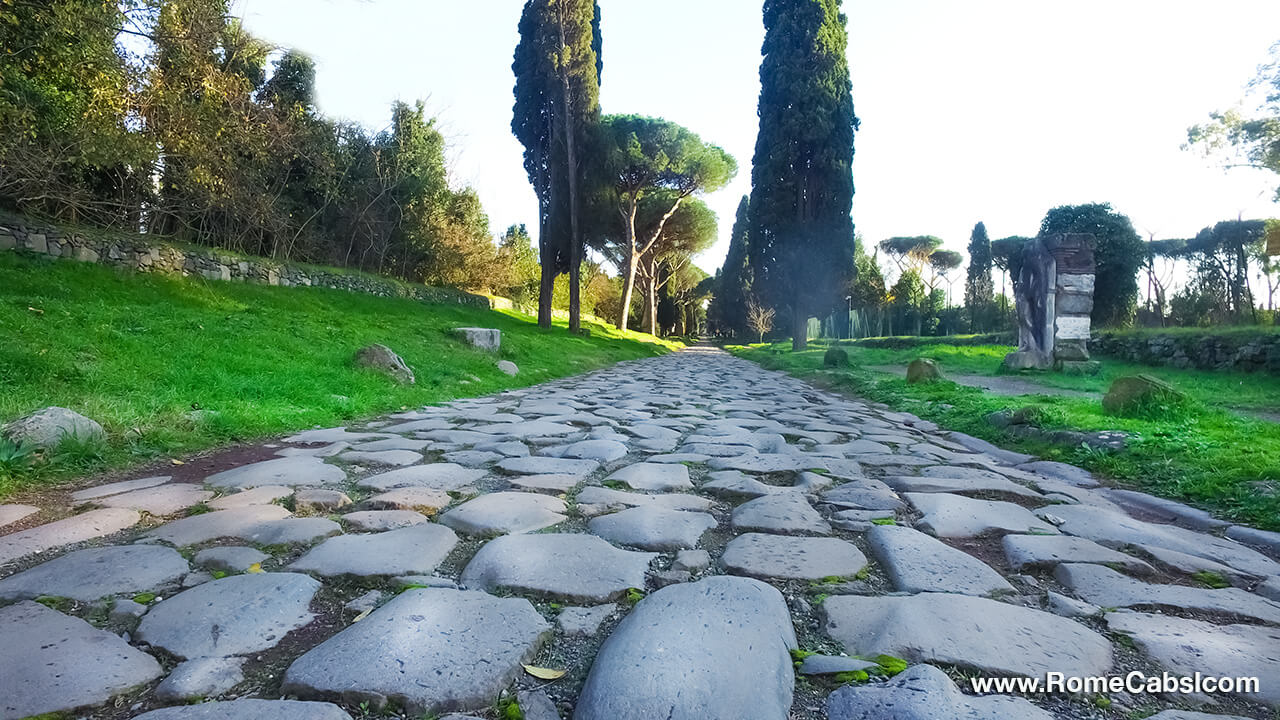The City That Walks You Back: A Full Day Beneath and Beyond Rome’s Surface
Just before dawn, Rome feels like a held breath. The streets are damp from overnight washing. Water glistens on uneven stones, and the only sound is your own footsteps clicking against timeworn granite. Campo de’ Fiori, usually loud with life, now hosts only shadows. Statues and lamplight form the only crowd.
At this hour, Rome is yours. The air carries a mix of espresso drifting from shuttered cafés and the lingering must of history. You pass by locked storefronts and doorways as old as nations. Underfoot, there are layers: Etruscan tombs, imperial tiles, medieval basements, Fascist concrete. You walk above it all.
On a quiet corner, a small bar opens its door early. Locals step in, exchange few words, nod at familiar faces. You do the same. There’s no rush. Cappuccino arrives in thick ceramic. A cornetto with powdered sugar and orange peel. No phones. Just the daily rite. A man reads La Repubblica and frowns. The barista wipes down the same counter worn smooth by decades. In the corner, under an old shelf, a dog sleeps on tiles cooler than the rising sun.
Across from the café, half-covered columns hint at temples once dedicated to gods forgotten by everyone except Rome. The juxtaposition is casual. Rome never explains itself—it simply is. A bakery nearby opens its shutters. The scent of warm bread mingles with damp stone and the scent of motor oil. This is what continuity smells like.
You walk without needing direction. The city guides itself. A small plaque on a wall notes a saint martyred there. Below it, a teenager sprays graffiti. A woman walks by, balancing shopping bags and humming softly.
It’s not nostalgia that fills the streets—it’s layering. Rome is sedimentary. Every corner is both story and structure. The bones of ancient civilization sit beneath government offices. Churches rise from pagan foundations. Market stalls sell fruit in the same squares where speeches once declared empire.
Rome doesn’t hide its age. It flaunts it with grace. Cracks in marble, rust on iron gates, ivy reclaiming stone—all of it speaks. The old and the everyday exist together. You pass a storefront filled with secondhand restaurant furniture—some of it gleaming under dust, chairs from trattorias that no longer exist but left behind their shape.
By late morning, the streets begin to swell. Commuters mix with curious visitors. Rome shakes off its sleep. But for a moment, in that hour before it fully wakes, you’ve glimpsed something essential: not what Rome looks like, but what it rests on.
Midday – The Glare of Glory
Midday arrives with a flood of light. The Pantheon stands open-mouthed, its oculus welcoming the sun. Light pierces the ancient interior like a spear, illuminating details carved two thousand years ago. Tourists move in slow orbit beneath the dome. It feels like theater, the camera flashes a substitute for applause.
Outside, Piazza Navona glows. Bernini’s fountains are caught mid-motion, marble ripples frozen in joy. You watch people lean against centuries-old stone, smiling for photos, unaware they stand on the footprint of a Roman stadium. Beneath the performance lies blood, sport, triumph, and humiliation.
You walk down Via del Corso, past sleek shops and wide-eyed visitors. Rome’s modern face stretches itself thin over imperial bones. Government buildings loom—clean, beige, bureaucratic—but their architecture still whispers of Caesar’s silhouette. The windows may be bulletproof, but the columns still recall oratory and ambition.
The Trevi Fountain catches you off guard. You’ve seen it in movies, postcards, screens—but in person, it’s a living contradiction: extravagant yet precise. Tourists line the edge, fingers poised over coins, each silently wishing. A girl climbs the side for a better photo. A guard blows a whistle. Then the moment resets.
The heat builds. Shadows shrink. Rome at midday is loud. Vespas snarl through alleys. Waiters shout across tables. The marble reflects sunlight like mirrors. You escape down a side street, blinded and flushed.
Lunch happens behind an unmarked wooden door. A small trattoria. No English menus. A few tables, linen that’s seen better years. An old man pours water into your glass and sits across from you uninvited. He gestures to the wall—a barely-visible outline of Roman brick. “Not a ruin,” he says. “Just an old foundation.”
He speaks slowly, between bites of bread and anchovies. He’s lived here his whole life. He remembers when this block smelled of horses, not scooters. He gestures again to the exposed wall. “Rome isn’t showing off,” he says. “She’s just being seen.”
The pasta arrives with a small bowl of pickled onions. You eat in silence, watching the man watch the city through the window. Outside, the sun glints off statues and camera lenses alike. Inside, the rhythm slows.
After lunch, you continue. Rome keeps no schedule. Your footsteps fall into the city’s own tempo: that of emperors, pilgrims, revolutionaries, and laborers. Midday in Rome is heavy. But it’s not oppressive. It’s filled with witness.
Cracks, Cats, and Quiet Revolutions
The light softens. The heat relents. Rome turns amber. You arrive at the Colosseum just as the sun catches its upper arches. What once roared now hums. The shadows stretch across ancient stone, and it no longer feels like a monument—it feels like a mirror. You see its scars, its grandeur, its stubborn survival.
Street cats wind through the ruins. Locals feed them and whisper their own legends. One cat sits on a fallen Corinthian capital like a throne. Someone says she’s the reincarnation of Agrippina. No one laughs.
You turn toward Trastevere. The city shifts here. Less monument, more texture. Vines crawl up walls. Laundry hangs between windows. The air smells like garlic, wet leaves, and old stories. On one street, a mural reads “Tutti i Santi hanno un passato.” All saints have a past.
There’s no itinerary—just motion. You follow sound, smell, and shade. In one alley, you find a shoe cobbler smoking under a fig tree. In another, a couple kisses against graffiti spelling “Ti amo ancora.”
You step into a forgotten church—no sign, no name. Just a cracked door left ajar. Inside, it’s dim. The air is thick with dust and candle wax. As your eyes adjust, chanting begins. A handful of monks in brown robes, voices rising in perfect, dissonant beauty. You sit, not out of faith but awe. Holiness sneaks up on you here. It doesn’t need to be explained.
Back outside, the twilight deepens. You sit on a crumbling wall above the Tiber. A boy skates past, nearly losing balance. The river moves slowly, like the city itself. A tour boat drifts by, unnoticed. Lights begin to twinkle. Restaurants drag tables into alleys. Someone strums a guitar.
This is the hour of in-betweens. Not old, not new. Not day, not night. Not ruin, not rebuilt. Rome lives here, in the tension, in the cracks.
Rome Whispers When the Lights Go Out
By night, Rome stops trying to impress. The lamps cast golden circles on uneven stone. The glow isn’t warm—it’s intimate. Shadows take the lead. They stretch across facades, turning baroque curves into secrets.
The noise softens. Mopeds give way to murmurs. You pass open windows where forks clink against plates. A grandmother gestures wildly in dialect over dinner. A child laughs. Somewhere, a priest sings quietly in Latin. The entire city exhales.
On the Spanish Steps, a man in his sixties sips red wine from a plastic cup. He smiles when you sit nearby. “You’ve been walking all day,” he says, as if it’s a compliment. You talk. About home, about Rome, about nothing. He asks why people keep coming here. You think for a moment. “Because it still matters,” you say.
You buy a gelato—fig and ricotta—and sit beneath a ruin. The marble is cold but familiar. The sweetness hits your tongue just as the bells of St. Peter’s ring faintly in the distance. Sugar, stone, memory.
Your route back to the hotel isn’t direct. Rome doesn’t offer straight paths. It loops. A wrong turn leads to a hidden piazza. A dead end reveals a mural you didn’t know you needed. A group of students dances to a speaker balanced on a Vespa seat. No one watches, but no one interrupts.
Rome at night is reflective, not asleep. You think of the layers you walked: the empire before coffee, the glory behind fountains, the cracks holding vines. What you remember most isn’t a place, but a feeling. Not a monument, but a mood.
You didn’t just visit. You didn’t just see ruins or snap photos. You walked through the city’s memory, and let it press itself into your own.











